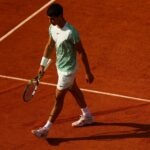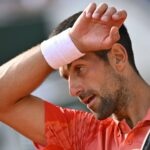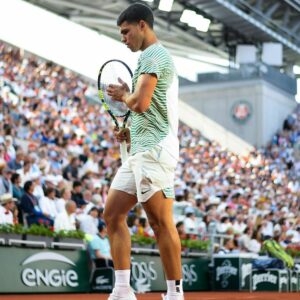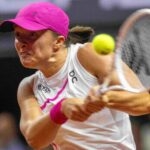Why cramp has a nervous (and not a physical) origin, and why young players have more of them
Sports physiotherapist Florian Patalagoity explains the known causes of cramps in tennis players. There are more complex and indomitable causes than you might think.
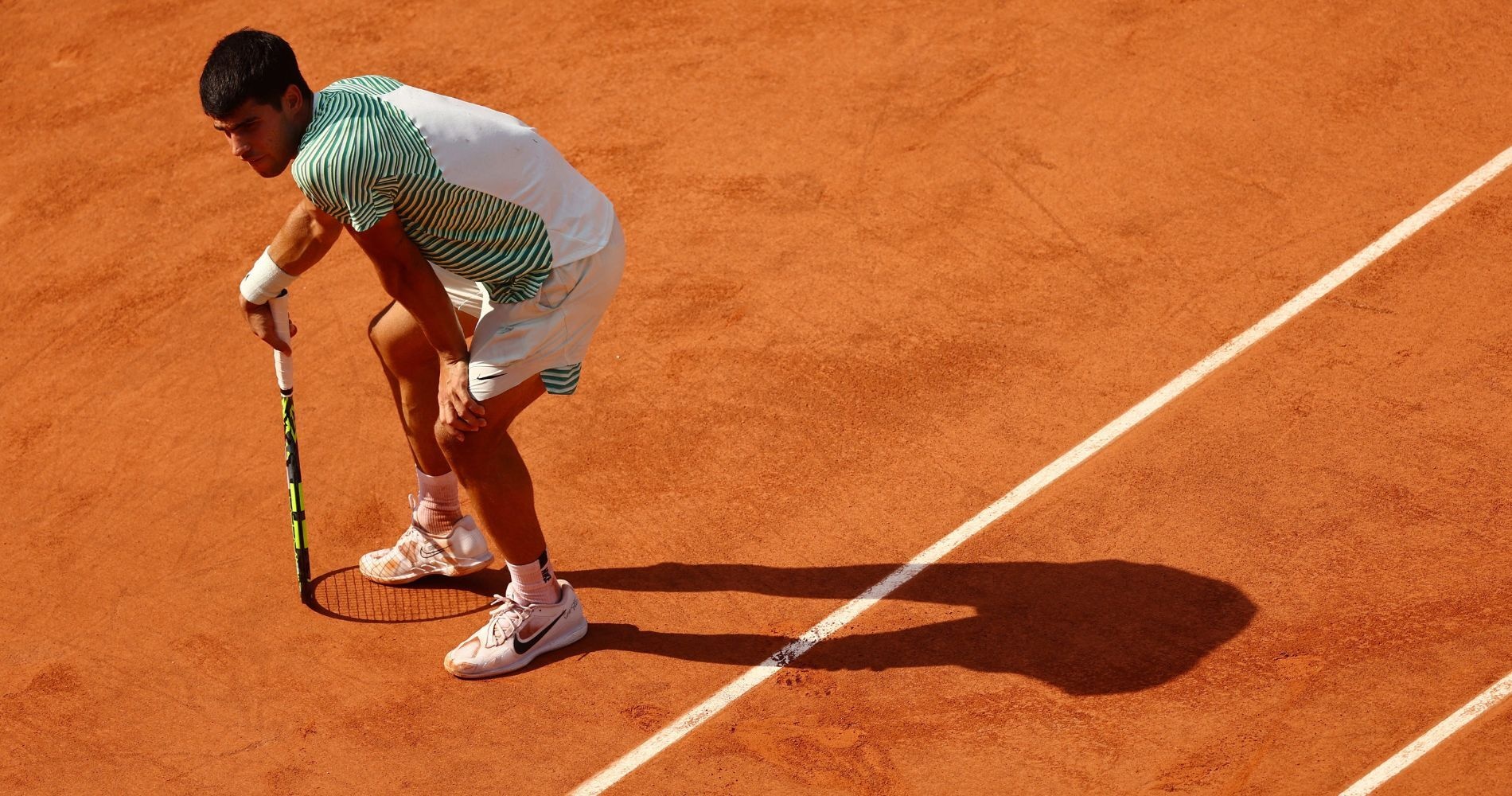 Carlos Alcaraz suffers with cramp at Roland-Garros (AI/Reuters/Panoramic)
Carlos Alcaraz suffers with cramp at Roland-Garros (AI/Reuters/Panoramic)
We poor amateur tennis players only marginally have the opportunity to experience what the champions feel on the world’s greatest courts. Carlos Alcaraz’s cramping at the start of the third set of his Roland-Garros semi-final is the exception that proves the rule.
It’s happened to all of us at some point, and sometimes in the most unlikely of circumstances, to feel that calf or thigh slip from its duty, contract uncontrollably, and give us the gait of a lame duck walking aimlessly through brambles.
Even if cramps sometimes make their appearance in tennis legend – Michael Chang against Ivan Lendl in 1989, Shuzo Matsuoka at the US Open in 1995 – or simply in the course of the season – Holger Rune against Alex de Minaur in Acapulco this season – they were not part of the scenarios envisaged between the two best players in the world, hyper-prepared physical beasts, including Alcaraz, winner of the US Open in September 2002 after 19 sets played with great intensity in seven days.

Cramp is not an injury
Cramps are nonetheless a complex ailment – not an ‘injury’, because there is no trauma to repair – difficult to anticipate, almost impossible to overcome in real time (hence the 6-1, 6-1 loss suffered by Alcaraz after his call to the physio) and in which physical factors are no more important than nervous ones.
“There are four factors that contribute to cramps,” explains Florian Patalagoity, a sports physiotherapist in Paris who has worked with Serena Williams for many years:
“1- An individual may be more or less prone to it. We still don’t know whether it’s linked solely to muscle fibres;
“2- For a long time, cramps were linked to a lack of hydration, but we talk about it less and less. We’ve seen athletes who were completely dehydrated not cramp at all – and the opposite is true;
“3- What is known as an electrolyte imbalance can cause cramps: a lack of sodium in particular, which is why we use exercise drinks containing salt, magnesium and potassium;
“4- And finally, the most likely hypothesis: neuromuscular disorders, i.e. a deficit in muscle control by the spinal cord.”
Since the nerves are involved in the problem, cramps are all the more likely to occur when the athlete is under stress
Florian Patalagoity
In this respect, cramp is less a physical injury than a mental one. “Since the nerves are involved in the problem, cramps are all the more likely to occur when the athlete is under stress.”
In the case of Carlos Alcaraz, everything points to this explanation. The Spaniard may be the world No 1, but he had never played the Big Three in a Grand Slam, this was his second semi-final in a major, and he was the favourite for the match and the tournament. He had no difficulty in admitting as much at the press conference.

To understand cramps, you need to understand that the automatisms that cause muscles to contract or relax are not controlled by the brain but by the spinal cord, through the neuro-miscular bundles that make the links between the nerves and the muscles.
“When you play tennis,” explains Patalagoity, “it’s your brain that sees the ball, orders your movement, controls your placement and gesture and visualises where you want to put the ball. But the last millisecond of action is controlled by the nerves via mechanoreceptors that act as both accelerator and brake, just like in a car. A cramp is a neuromuscular dysfunction in which the accelerator is pressed too hard.”
“A disturbance in the muscular automation process”
A well-known online dictionary refers to “explosive hyperactivity of the motor nerves”. “We could also talk about a disturbance in the muscular automation process,” Patalagoity adds.
In very prosaic terms, when a headless chicken continues its race to the first obstacle or a decapitated person’s head still emits some face expression, it’s because the nerves are still functioning autonomously independently of the brain. Even if they are chilling, these examples illustrate that the disconnection between the brain and muscles reveals the existence of a relationship between nerves and muscles that is independent of the conscious or unconscious will of individuals.
Nobody knows exactly what needs to be done to get rid of it. A therapist who says, ‘You’ve got cramps, you won’t get them next time if you do that,’ is a myth creator.
Florian Patalagoity
“What we know today about cramps is known and measured thanks to experiments on animals and muscle fibres from dead people,” says Patalgoity. “Nobody has been able to measure all this on an athlete during a race. And nobody knows exactly what needs to be done to get rid of it. A therapist who says, ‘You’ve got cramps, you won’t get them next time if you do that,’ is a myth creator.”
The bad news for Carlos Alcaraz is that if he is prone to cramp – he had cramp when he won the US Open against Stefanos Tsitsipas in 2021 – there is no magic formula to protect him from another incident of this nature. Being very well prepared physically is no protection. Daniil Medvedev’s trainer, Eric Hernandez, had this to say about the cramps felt by the future world No 1 in Miami in 2021: “You never know what stress can do to a player. This morning’s training session was more physically demanding than any three-set match.”
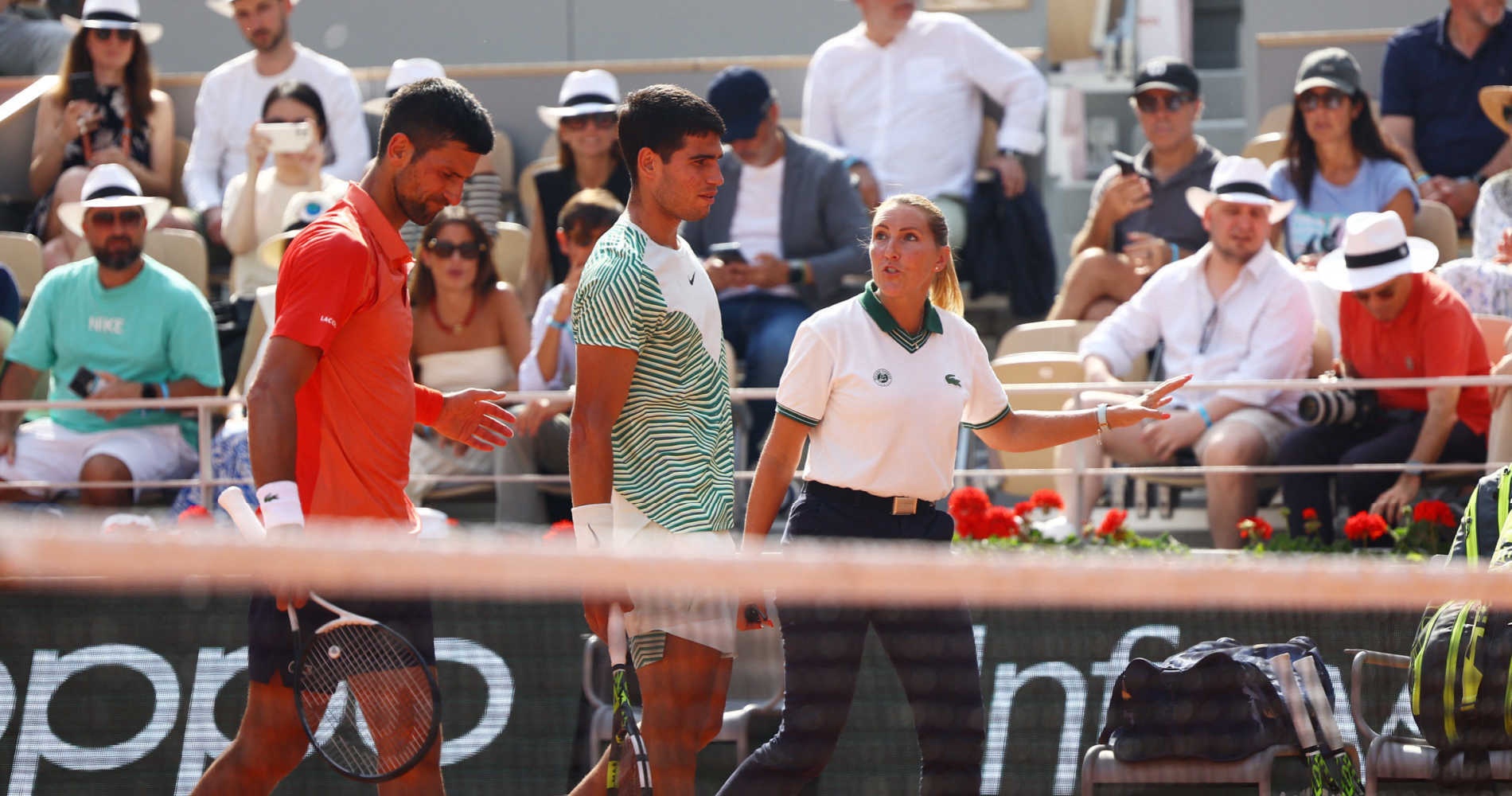
In terms of prevention, “you can give a player a pre-match massage to make sure that all the muscles are as loose as possible and that they don’t start the game with any tension,” says Patalagoity. But this precaution will have no impact on how the nerves behave in extreme situations.
The best tool Alcaraz can and will seek to use is experience. “If you take two players who are making the same effort, who are prepared in the same way, but one is used to this type of effort and the other isn’t, then the one who isn’t used to it is 10 times more likely to cramp,” explains Patalagoity.
“The intensity was enormous and we both felt it in our legs,” said Novak Djokovic after the semi-final. But for the Serb, it was his 45th Grand Slam semi-final and 12th at Roland Garros. Alcaraz has only played 35 best-of-five-set matches. In nine Grand Slam tournaments.
